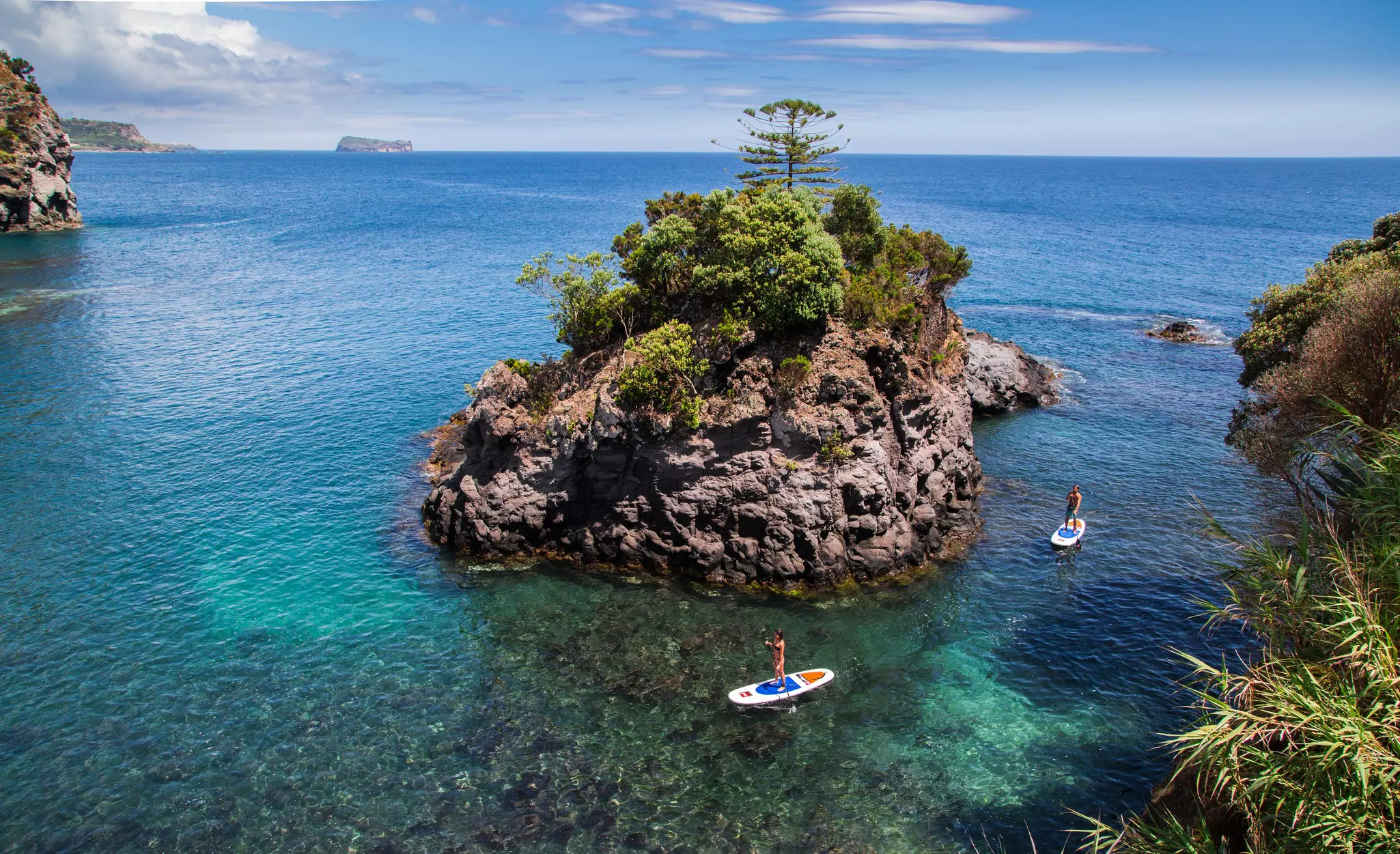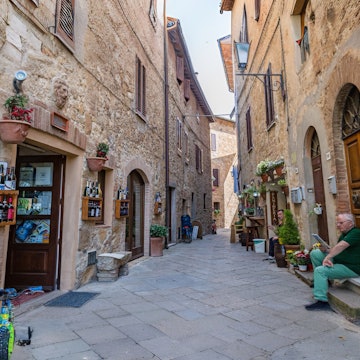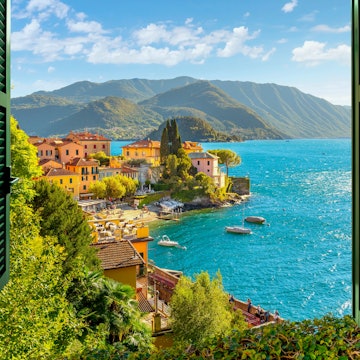
Five reasons why Lago d’Iseo is the best Italian Lake

Jun 27, 2025 • 8 min read
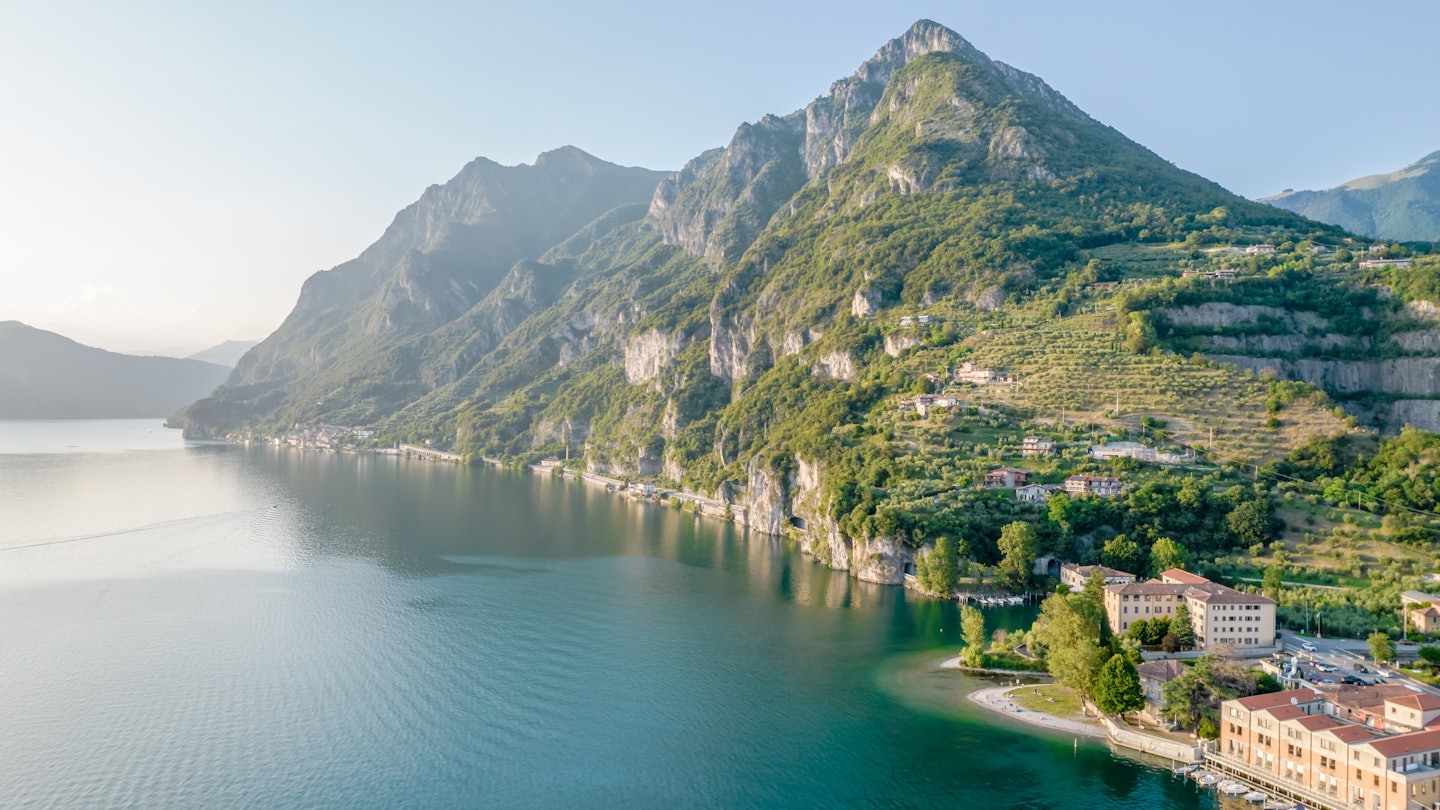
An aerial view of Marone on Lago d'Iseo. Audrius Venclova/Shutterstock
Glitzy Como, sporty Garda, refined Maggiore – these are the A-listers of the Italian lakes. Little Lago d'Iseo hardly gets a mention by comparison. The pages of the brochures are distinctly empty of its name. Therein lies the charm, the reason why this hidden S-bend of water in the Lombard Alps is surely among the best lakes in the country.
Snaking from the vineyard-cloaked hills of Franciacorta in the south all the way to the base of the Val Camonica, where ancient cave paintings hide in the caverns and the River Oglio bleeds down from the glaciers, Iseo certainly has the looks to rival its compadres.
At one end, the great Corna Trentapassi lurches upwards through forests of oak and pine to sinewy ridges where you can hike, ski and picnic in rustic rifugio (traditional mountain huts). At the other, the sleeping giant of Monte Isola, a mountain that rises right in the middle of the lake, hosts ancestral castles and stirring shrines from the 14th century.
Take it slow or do it fast – it's up to you. A week on the lakeside can be a lazy affair filled with wine tasting, piazza people watching and beach days. You could also whiz around the whole of Iseo by bike, stopping for wild swims and wanders through medieval squares. Or take to the hills for walks in the Bergamasque Alps, through earth-smelling oak woods and lush pastures to get views of the Adamello ice fields and the Italian plains in the distance. Tempted? Thought you might be!
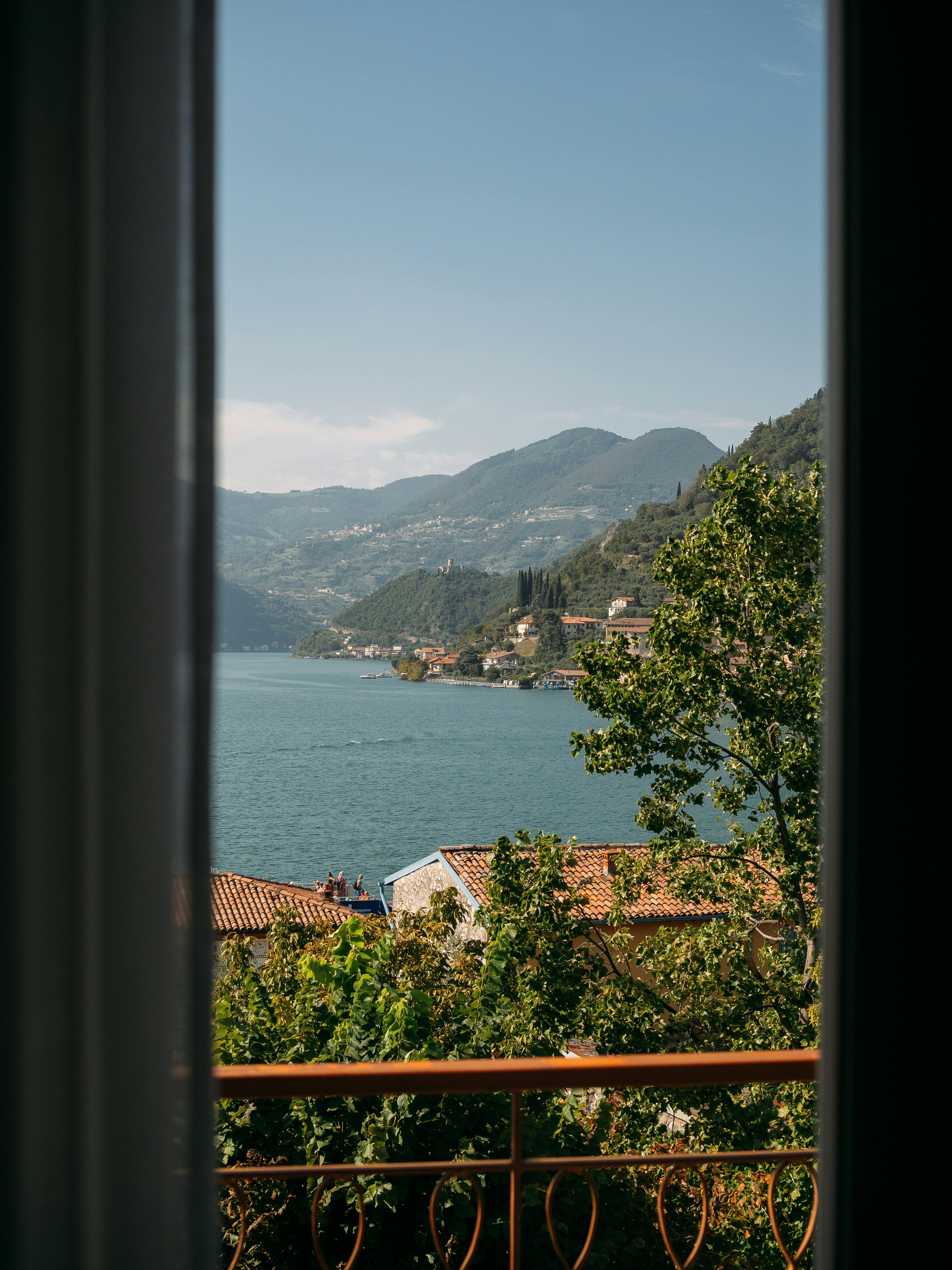
When to arrive: If it's your first visit, get to Lago d'Iseo early enough to hop a ferry over to Monte Isola and hike to the top – it's one of the undisputed highlights of Lombardy.
How to get from the airport: The rise of Bergamo Airport as a hub for low-cost airlines has made it easy to get to Lago d'Iseo. Fly there, rent a car, and you can be by the lakeside in 30 minutes. There's also a local bus from Bergamo station that will go all the way to handsome Lovere town on the north shore, taking about 1.5 hours.
Getting around: Bikes, boots and boats are the MO when it comes to getting around the lake. A cycle path links all the pretty towns of the eastern shoreline. Ferries run loops from Sarnico in the south to Lovere and Pisogne on the north bank, making stops at Monte Isola, though connections are more frequent in summer. Slow travelers can hike any number of beautiful trails along the shorelines and up into the Prealps to get from village to village.
Where to stay: Vulcano Palace is a boutique hotel with a whiff of the riviera about it located in sleepy Castro village. Camping Eden is a typical Italian mountain campground with budget pitches and spectacular views over the mountainous northern shores of the lake. Or try Araba Fenice, a sleek design hotel with an infinity pool that really makes the most of the alpine views.
What to pack: Pack according to the seasons and the activities you want to do. Winter can get snowy and cold, while the summer is balmy. Hikers will want solid boots for cold-season treks and trail runners for walks between June and August. Bring swimming stuff if you plan to arrive after May, which is when the beaches and watersports open in earnest.

1. Monte Isola
The jewel in the crown of Lago d'Iseo is the largest lake island in Europe: Monte Isola. One mile wide and 415 meters above the lake surface, it's like someone scooped a gelato into the middle of the water. Only this particular gelato is green and forested, and the cherry on top is a beautifully weathered 13th-century church.
Trails from each of the main ferry towns combine in the middle of the island to offer a panoramic, if steep, ascent to the sanctuary above. There are a few zigzags and steps, but you'll eventually emerge onto a buttress of rock where the church sits precipitously over the lake. Needless to say, the views are incredible, so save your picnic if you have one. The inside of the church – which has a series of flashy frescos – is open from 10am to 5pm.
Getting there: Ferry is the only way to cross to the island. The shortest connections are from Sale Marasino and Sulzano on Iseo's eastern shore, but you can also come in from Lovere, Pisogne or Sarnico if you don't mind a longer ride. It hardly matters which port you alight at - they are all beautiful. Peschiera Maraglio on the south coast is the busiest, has the most bars, and good access to grassy swimming and sunbathing areas. Siviano, on the northwest shore, is a pretty hamlet of crooked stone lanes and painted doorways.

2. Get lost in Lovere
Little Lovere is one of those places that wiggles its way into your heart. You'll find yourself sighing with nostalgia five years after your first visit, wishing you were sat somewhere on that lakeside piazza sipping a coffee, munching an almond croissant while the church bells echo overhead.
Quite rightly, Lovere has earned itself a place among the 350 I Borghi più belli d'Italia, a league of the most beautiful towns in Italy. It reclines on a sliver of land between the northern mountains and the water, with decked walking paths linking up its various shoreline villas and cobbled squares. On hot days, grab an outrageously large ice cream from Bar Centrale and dangle your feet in the lake before turning around and diving into the old town.
There, lanes wind and weave, circle and bend back on themselves. You'll get lost, which is perfect. Keep strolling until you happen upon bijou Piazza Vittorio Emanuele II. That marks the heart of the medieval quarter – look up to see 13th-century frescos adorning the Torre Civica clock tower. Then, weave through some more alleys back to the Gallery of the Tadini Academy on the lakeside. There's a collection of ecclesiastical Venetian paintings inside, but you'll have to make it past the artisan ice creams and cocktails at Wand Gelateria first. A hard task.
Planning tip: Lovere hosts a La Notte Romantica (The Romantic Night) festival in June. These take place all over the Borghi più belli d'Italia but Lovere's is particularly lively, with street musicians and light shows.
3. Aperitivo in style
Lago d'Iseo lays claim to what's surely among the very best aperitivo spots in Northern Italy. Cue Darsena21. Noticeable for its ochre façade and red-painted shutters, the bar pops up unexpectedly from the reed beds and beaches of the eastern shore. It's got an inside area and a small garden, but shun those in favor of the overwater deck. Its rep as a truly fine sundowner location is well earned. Views of Monte Isola dominate the foreground, while the high Alps jostle for position on the horizon. The Aperol spritzes flow. Focaccia and olive tasting plates bring a touch of saltiness. It's perfection on a summer's evening.
Planning tip: From May to September it can be impossible to score one of those coveted places on the deck if you arrive any time after opening. Be there at 5pm to avoid disappointment.

4. Hike, hike and hike some more
Miles and miles of idyllic trails hardly make Lake Iseo unique among the Italian lakes. But the paths here are noticeably less trodden than over in Garda and Como. The northern end of the lake, where it wiggles into the Val Camonica, has the best walking; the highest mountains converge here, where the lower Prealps give way to the great cradle of the Bergamasque Alps.
From Lovere, you can hike an ancient Roman road up to the Bossico Plateau. You'll go through dense oak forests, past the Sanctuary of San Giovanni in Monte Cala (a fantastic spot to drain the thermos of tea), and up to the town of Bossico itself. That can take the best part of a morning, but it's at Bossico that the real fun begins. More than 50km of paths loop around a plateau that's blanketed in galleries of pine woods and meadows, with a spur that leads off to the summit of Monte Colombina at 1458 meters up. Conquer that, and you'll get 180-degree panoramas of Lago d'Iseo and Monte Isola island in the company of wildflowers and butterflies.
An even tougher day hike can whisk you high above Pisogne on the northeastern shore to Monte Guglielmo via the ridge of Punta Caravina. There's a church up there, often socked in by plumes of mist, and sweeping panoramas of the mountains that lie between Iseo and Lake Garda. Take a break at cozy Rifugio Medelet on the way down, where the homecooked pasta tastes even better mid-hike.
Planning tip: Visit in late spring or fall to catch Lago d'Iseo at its hiking best. It's plenty warm for post-walk swims in the lake at those times, the trails are less busy than they are in peak summer, and each season has unique draws – wildflowers in May, changing colors in the forests in September and October.
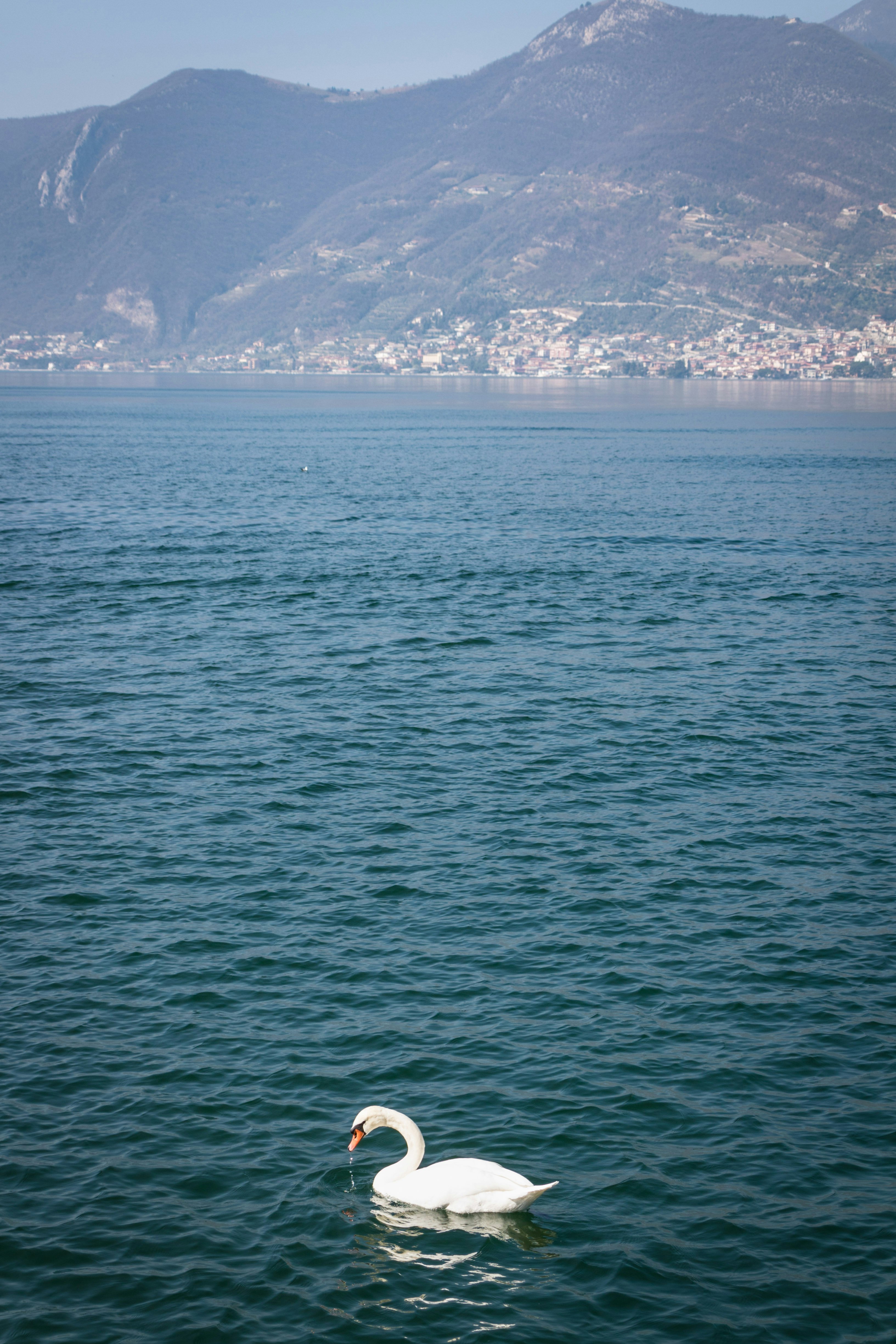
5. Swimming in the lake
There aren't as many organized beaches here as in, say, Garda. They do exist. There's a swim-up floating platform at the beach in Tegattini on the south shore, for example, and even a whole swimming pool with sunning cabanas at the highly popular hangout spot of Il Lido near Iseo Town.
However, the best swimming spots around Lago d'Iseo are the secret ones; the wild ones; the ones where you leap off the side of a deck straight into the alpine water. The village of Castro has its own grassy lido where slippery steps lead down into the lake, offering views of the mountains as a backdrop. Then there are the two small runs of pebble either side of the river in Marone village. Not only are they quiet and shaded by fragrant pine trees, but they also gaze northwards, which means visions of higher, snow-capped peaks as you swim.
Planning tip: This is alpine water and it can be cold and deep, so only swim here if you feel absolutely confident!


